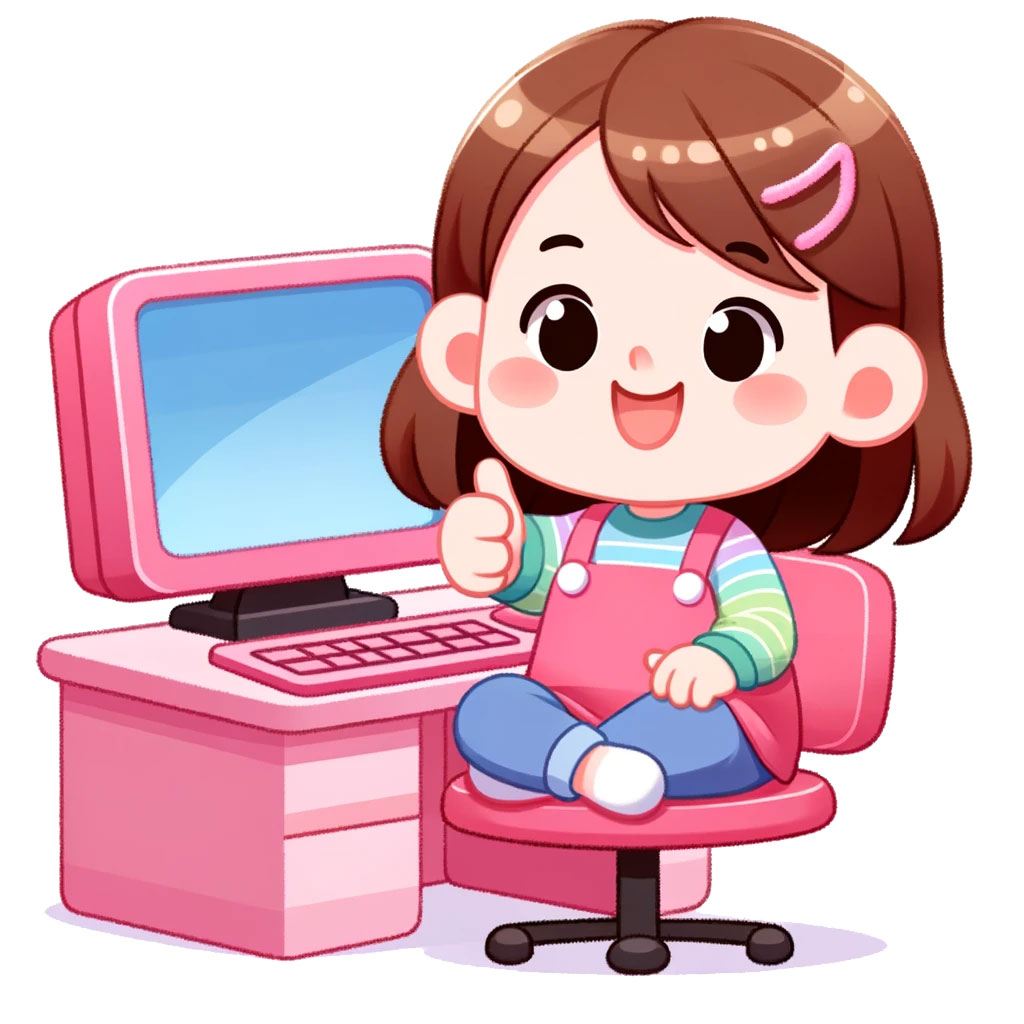Congratulations – if you’re reading this, you haven’t given up yet 😊
Potty training is one of those parenting challenges no one really covered in detail at the baby prep classes. It’s not just a big step for your little one, but a complete lifestyle shift for you too: from now on, there’s always a spare pair of underwear, wet wipes, and a bit of hope tucked into every bag.
If lately the phrase “I need to pee!” echoes through your home more and more often, only for the couch to end up taking the hit… we feel you. This blog post is for the parents who are still hanging in there, looking for the little things that can make this stage a bit easier—or at least slightly less chaotic.
We’ve gathered the most useful potty training essentials—not from a catalog, but from real experience. If you’re heading into battle, you might as well know what gear to bring.
And if you’re still figuring out how to start potty training—or if the couch has already been sacrificed a few times—you might want to check out our previous post: Potty Training Tips and Methods Even Husbands Could Learn From. It’s full of real-life stories, practical steps, and the kind of honesty that doesn’t sugarcoat the mess (literally). 😊
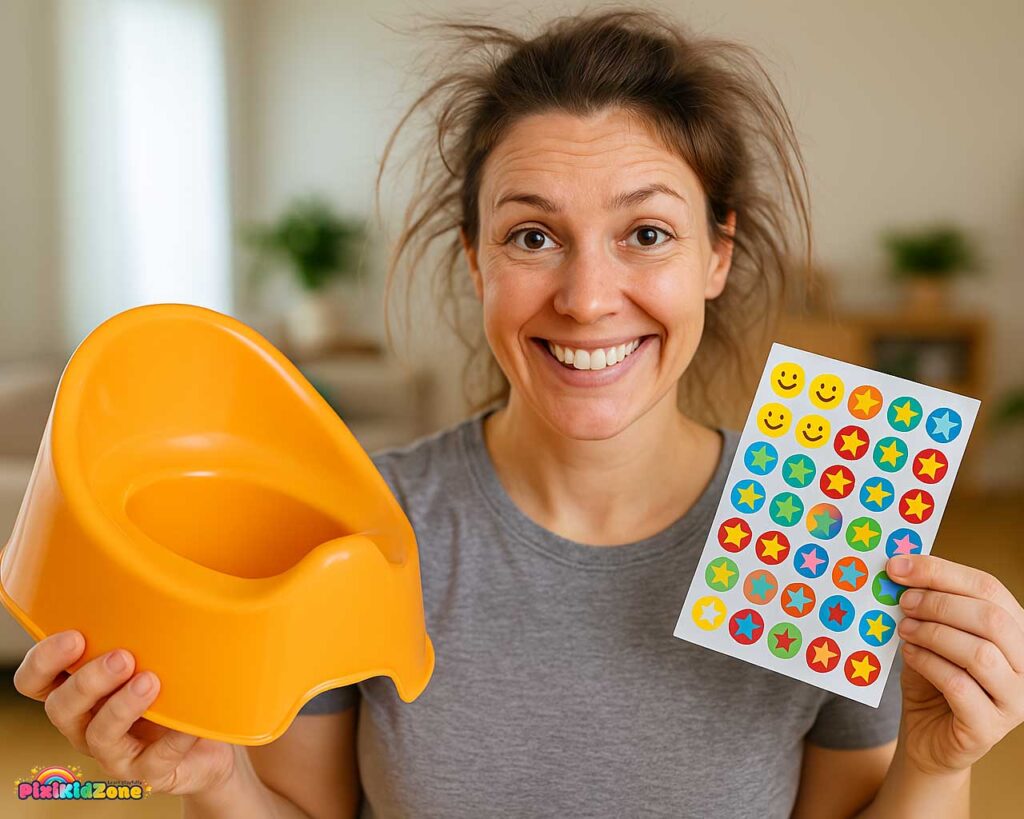
It takes a bit of patience, a sense of humor, and a few well-chosen potty training essentials
Potty training doesn’t work like magic. There will be proud victories—and there will be surprises that land on the carpet.
The good news is, with a little preparation, you can save yourself a lot of stress. And no, you don’t need a smart potty or a voice-activated reward system—just a few tried-and-true tools that make the whole process a little more manageable.
Potty training essentials for survival – the must-have items that make things easier
Potty training is an exciting but unpredictable adventure. Some days it feels like everything is going smoothly—other days, well… let’s just say the rug didn’t deserve that. To make this phase a little less stressful (for everyone), a few practical tools can go a long way. They won’t work miracles, but trust us, they help a lot.
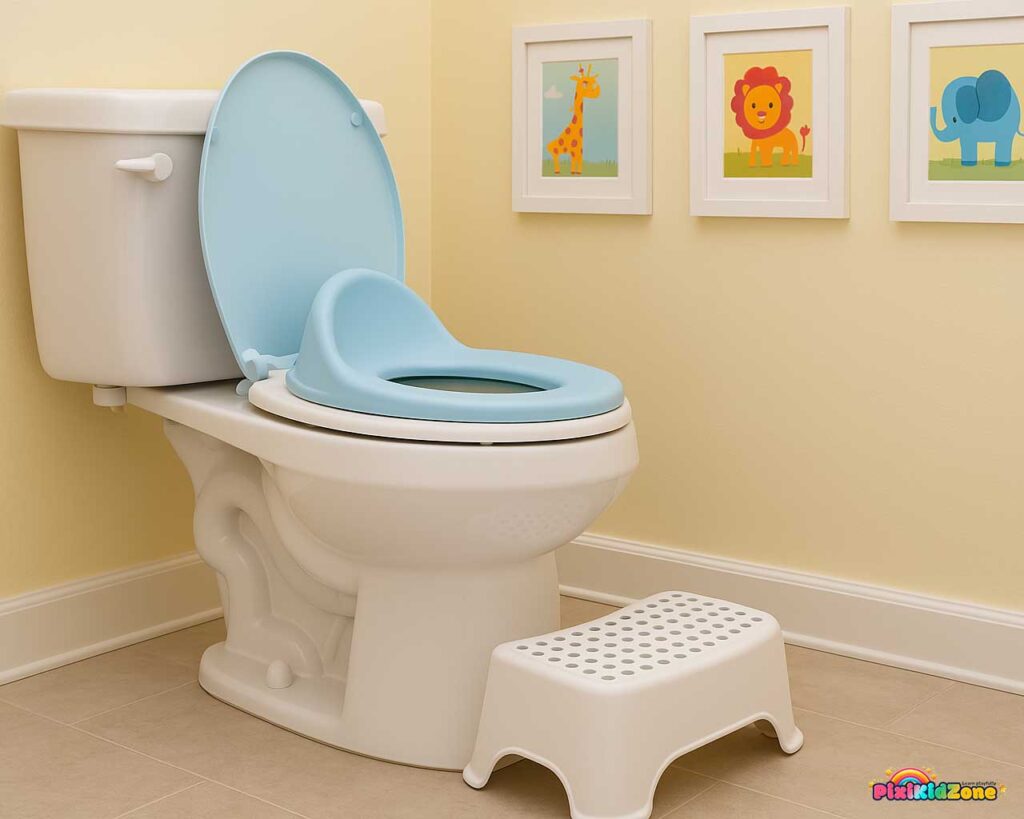
a) Potty or toilet seat reducer – which one works better
There’s no one-size-fits-all answer. Some kids prefer their own little throne (especially the musical kind), while others want to do it like the grown-ups and use the big toilet with a reducer. Let your child try both—sooner or later, they’ll pick their favorite.
b) Wet wipes, diaper cream, step stool – everything you need to survive
Always have a pack of wet wipes at hand. Diaper cream is also your friend, especially in the early days when irritation can pop up. And a step stool? That’s not just practical for reaching the toilet—it’s a confidence booster: “I did it all by myself!” That counts for a lot.
c) Potty-themed rewards – stickers and little moments of magic
You don’t need anything fancy. A sticker, a happy dance, or a silly doodle on the calendar can work wonders. What matters most is that your child feels proud of themselves and knows that their effort is seen.
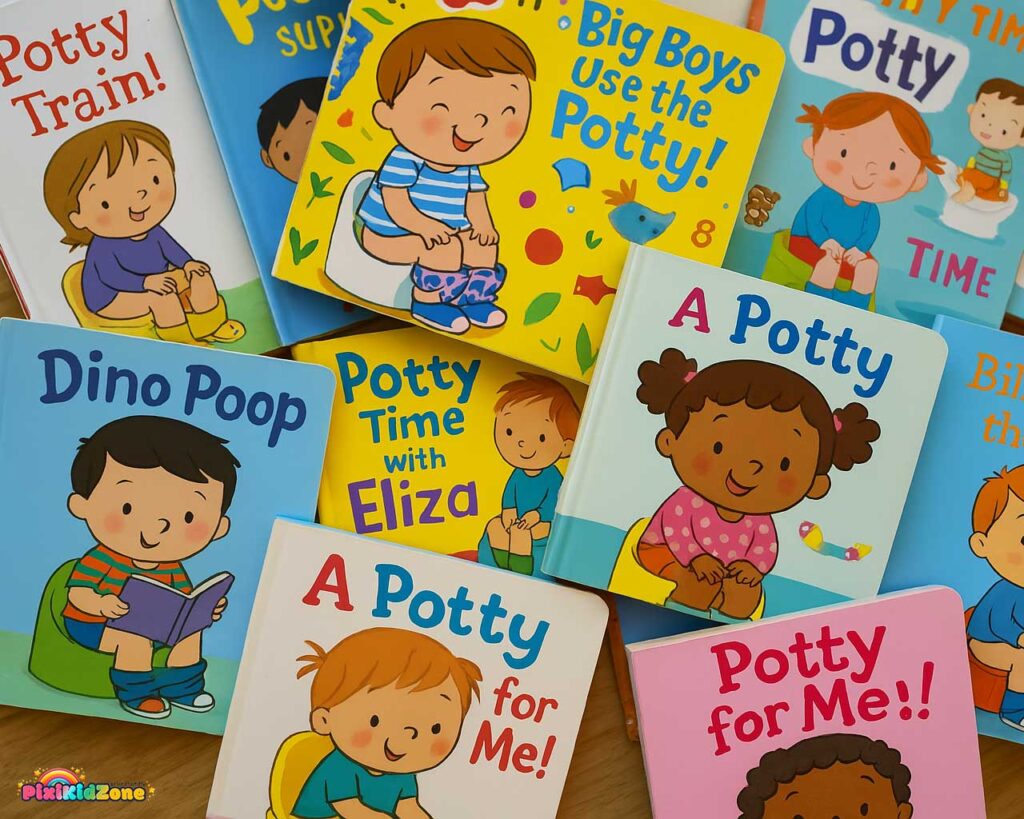
d) Books and stories – getting through the tricky days
There are so many sweet potty-themed children’s books out there. They help kids understand that this whole thing is normal—not scary, and definitely not embarrassing. And yes, that potty bear is still adorable, even if you’ve read the story for the twentieth time this week.
e) Accident-proof kit – for when the undies didn’t make it
Accidents happen. A spare pair of undies, an extra pair of socks, a plastic bag, and a dose of patience can be lifesavers—especially on the go. A waterproof car seat cover, a mattress protector at home, and maybe even a quick cuddle all belong in this emergency pack.
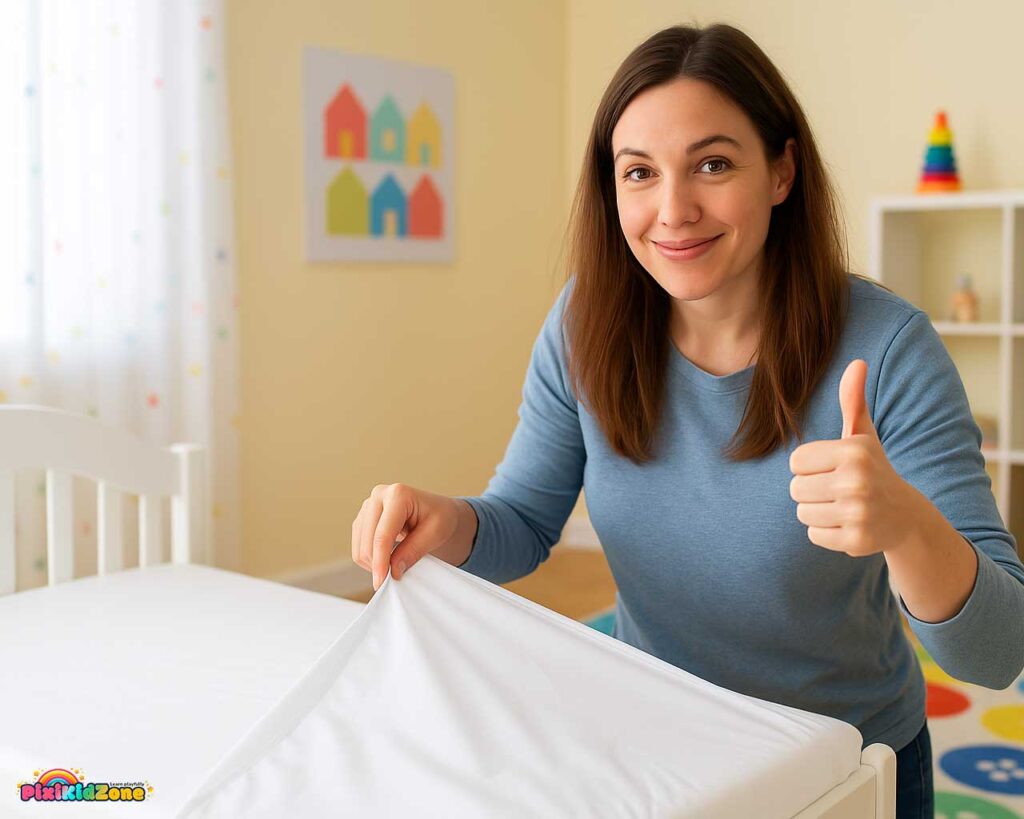
f) Mattress protector and extra sheets – nighttime backup is a must
Nighttime accidents are common in the early stages. A waterproof mattress cover and a few spare sheets can make all the difference—especially at 3 a.m. when no one feels like doing laundry.
g) Hard floor for playtime – avoid carpets in the early days
In the beginning, it’s best to keep your little one away from carpets, especially in play areas. Hard floors are much easier to clean and come with fewer surprises.
h) Travel potty – the comfort of the familiar throne
When you leave home, consider bringing the potty your child knows and loves. Familiar surroundings help reduce stress and keep the learning on track, even in a new place.
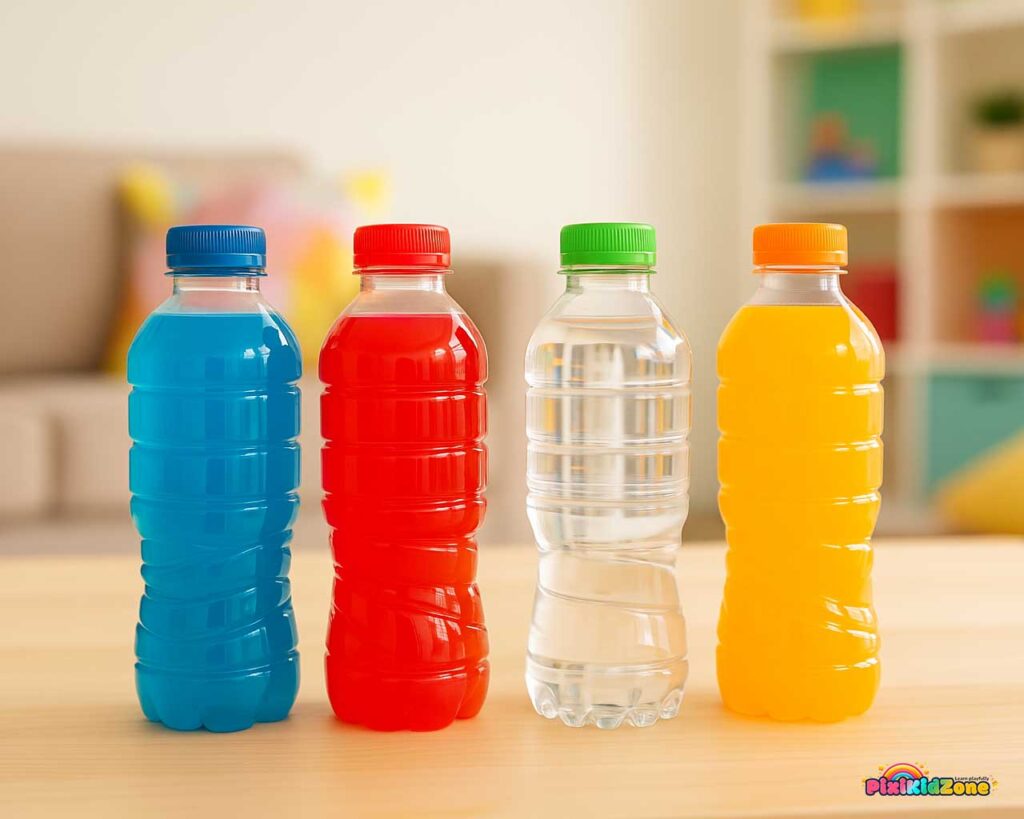
i) Lots of fluids – more chances to practice
The more opportunities your child has to use the potty, the faster they’ll get the hang of it. Offer water or diluted juice throughout the day to keep things moving—literally.
j) Supportive environment – consistency is key
Make sure caregivers, grandparents, or nursery staff are on the same page with your potty training plan. When everyone uses the same approach, kids feel more secure and confident.
k) At least three uninterrupted days at home – an intensive potty bootcamp
A long weekend or a few calm days at home can work wonders at the start. When everyone’s focus is on potty training, progress tends to come faster (and with fewer surprises).
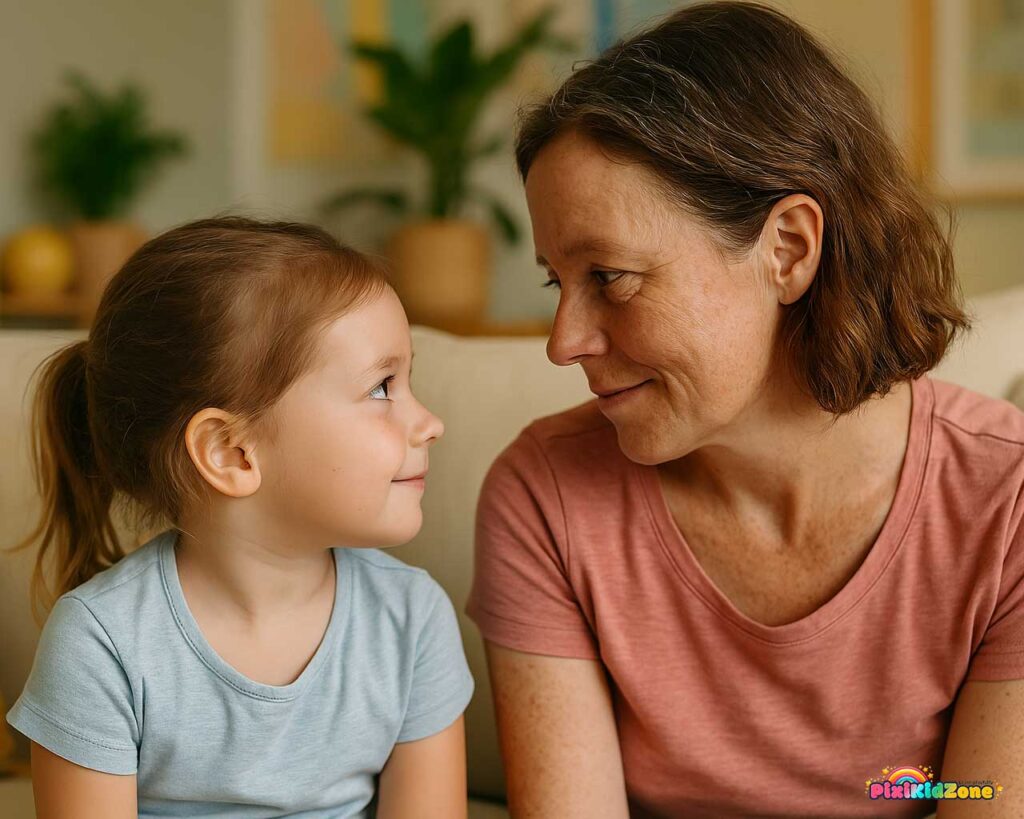
Potty training essentials no one talks about
There are the classic potty training tools—potties, wipes, sticker charts.
And then there are the little things no one puts on a checklist, but every seasoned parent quietly swears by. These aren’t sold in baby stores, but they can make or break your day.
These are the true survival tools that get you through the rough spots.
1. A timer or reminder app
Many kids get so caught up in playing, they completely forget about peeing. Setting a reminder every 20–30 minutes can help avoid those “Oops… too late” moments.
2. A solid sense of humor and survival mindset
This one might just be the most important. There will be moments when all you can do is laugh—like when your child sits on the potty for half an hour, then pees five seconds after getting up. You don’t need to be perfect. Just present. And maybe able to smile in the middle of the chaos.
3. A little corner for yourself
Whether it’s a warm cup of tea or five minutes of quiet, don’t forget about you. This journey is just as intense for the parent as it is for the child. A moment to breathe can go a long way.
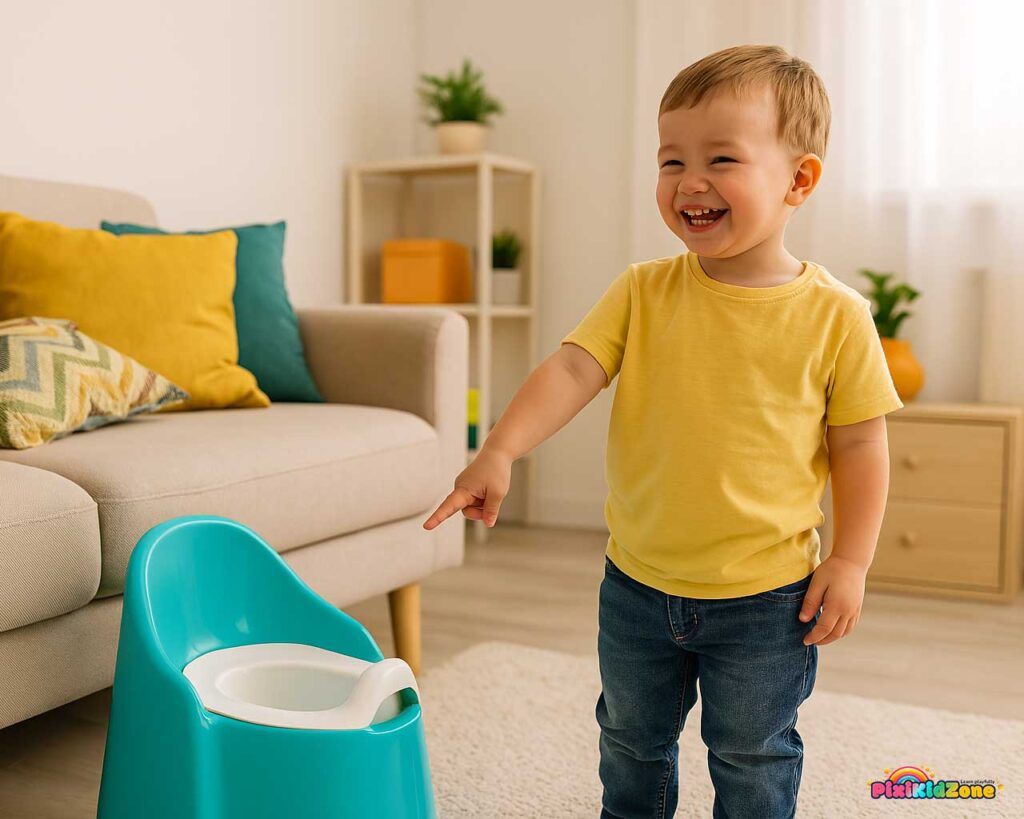
4. A potty zone at home
During the first few weeks, it helps to keep the potty in a visible, accessible spot—especially one the child can reach quickly. It doesn’t have to live in the bathroom right away. Convenience matters.
5. The phrase “That’s okay, maybe next time”
This simple line works wonders. It relieves pressure and reassures your child that accidents are normal. And if you say it enough, it might calm you down too.
6. A friend or fellow parent to talk to
Sometimes, just hearing “Yeah, we had a rug incident too” is exactly what you need. Potty training isn’t a competition, and it’s not a failure if things don’t go perfectly. Having someone to laugh or vent with is a true lifesaver.
The most important potty training essential you can’t buy – your attitude
Potty training isn’t just about gear and routines. It’s also about you.
One of the most important “essentials” no one really talks about is your mindset. If you go into this stressed, tense, or full of pressure, your little one will feel it too. Try to stay patient and calm—even when there’s a surprise poop decorating the living room floor 😅
This process takes time, energy, and flexibility. Even the most perfectly planned weekend will come with accidents. But when your parenting “mode” is focused on gentle support and positive progress, you’re already halfway there.
This is your part of the potty training journey.
Yes, every kid becomes potty trained eventually—it’s just a matter of time
When you feel like this will never end, remind yourself: it really will. Every child learns—sooner or later, in their own time.
The road may be bumpy, but every little success—whether it’s a proud pee in the potty or simply not on the couch—is a step in the right direction.
Sometimes, all you need is a little humor. And maybe a backup pair of undies. Or three. 😊

 English
English



 简体中文
简体中文 Español
Español Deutsch
Deutsch Português
Português Magyar
Magyar Русский
Русский Français
Français हिन्दी
हिन्दी العربية
العربية











